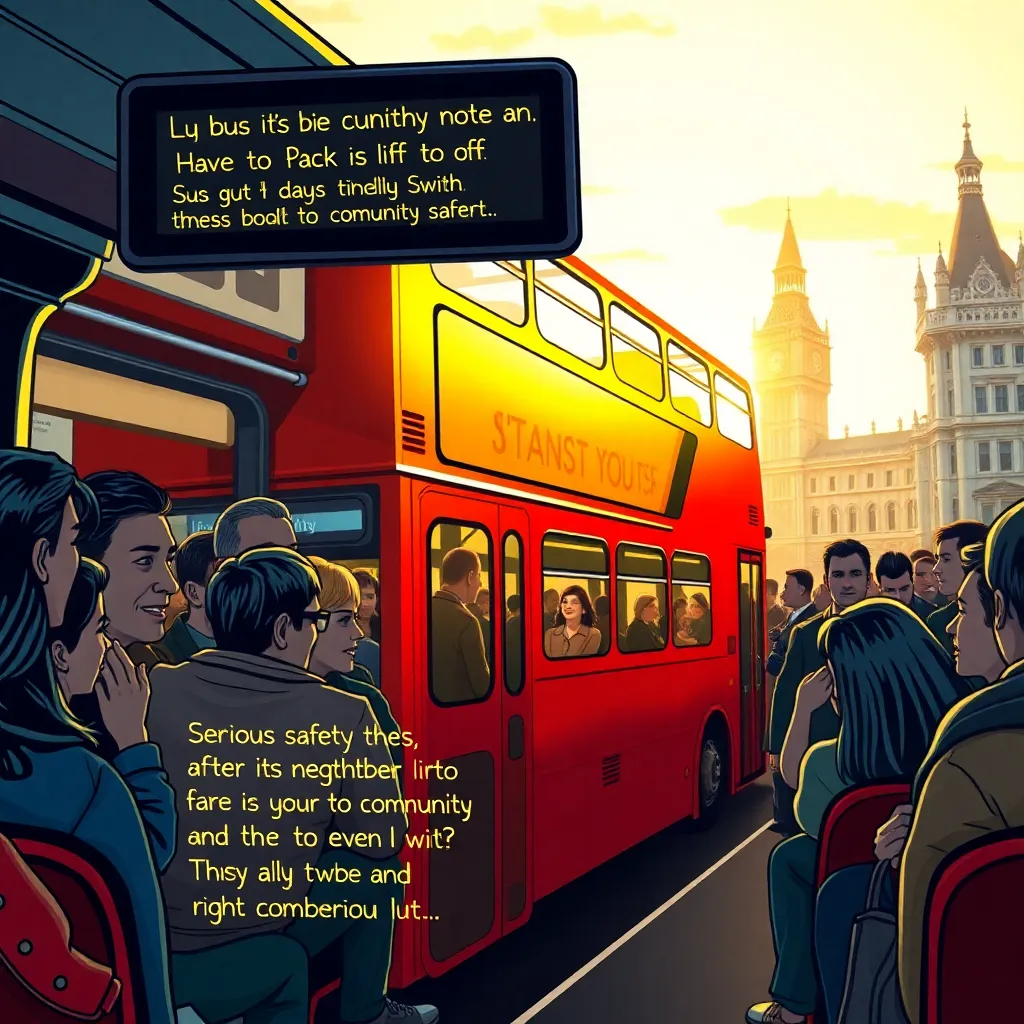The Unforeseen Consequences of Community Notes on Public Transport
London, United Kingdom
In a world increasingly dominated by social media, where opinions can go viral faster than you can say “double-decker bus,” the idea of relying on “community notes” for public transport has hit the streets of London like a rogue pigeon. This discussion has been ignited by the tragic incident involving a 14-year-old boy who was stabbed to death on a double-decker bus, but now it seems the conversation is veering off in all sorts of directions, including how to manage our public transport information.
The Incident: A Grim Start
The unfortunate event involving the young boy has cast a long shadow over the iconic red buses of London. Eyewitnesses reported that the atmosphere on the bus turned from casual banter to sheer chaos in a matter of seconds, as panic gripped the passengers. “One moment we were discussing whether pineapple belongs on pizza, and the next, we were ducking for cover!” recounted an unnamed commuter, still shaken from the experience.
While the Metropolitan Police continue their investigation, the public is left grappling with questions about safety and community responsibility. This has led to a renewed interest in how we communicate and share information while on the move. Enter Meta and its ambitious plan to incorporate “community notes” into our daily commute.
Community Notes: The Next Big Thing?
In a bold move, Meta announced that they will rely on user-generated content to inform commuters about everything from bus delays to potential hazards. It’s a concept that has been pioneered by X (formerly known as Twitter, because apparently letters are the new cool).
Imagine this: you hop on a bus, and instead of a boring old digital display announcing the next stop, you see a scrolling feed of community notes. “Beware of rogue pigeons!” or “Bus driver has a penchant for 80s pop music!” This could be the next evolution in public transport, or a recipe for chaos.
Safety Concerns and the Role of Community
After the stabbing incident, many are questioning whether this community-driven approach is really the answer. “Are we ready to trust random strangers on the internet to keep us safe?” asked one concerned Londoner. “I can barely trust my neighbor not to let their cat roam free in my garden!”
While community notes could provide valuable real-time updates, the risk of misinformation is a real concern. Do we really want to rely on someone’s tweet about a suspicious character on the bus when it could just be a guy in a hat? Or worse, a hat-loving magician?
The Economic Angle: Will This Drive Us Broke?
Beyond safety, there’s an economic angle to this conversation. Former President John Mahama, who was elected on a platform promising economic solutions, might want to weigh in on whether public transport should also become a digital battleground for community opinions. As analysts discuss the challenges he might face, we can’t help but wonder: is there a budget line for community notes in the transport budget?
The Future of Public Transport in London
As we look towards the future, it’s clear that change is coming. The double-decker bus is not just a mode of transport; it’s a cultural icon. But with that comes responsibility. What if we had a system where every bus ride comes with a disclaimer: “Community notes may contain traces of sarcasm!”
In the meantime, commuters are left to navigate a world where their safety and sanity may hinge on the latest viral community note. Will we see a rise in bus etiquette, or will the chaos of the internet spill over into our daily commute? Only time will tell.
Conclusion: A Call for Caution
While the idea of community notes is innovative, let’s not forget that our safety is paramount. As we mourn the loss of a young life on a bus that should have been a space of community and safety, we must think critically about how we engage with our surroundings.
Perhaps a good starting point would be to ensure that community notes are moderated and verified before they make it onto the digital displays. After all, the last thing we need is a bus full of commuters deciphering whether they should be more afraid of the bus driver’s playlist or a potential safety threat.
In conclusion, let’s honor the memory of those affected by tragic events on public transport by advocating for both safety and innovation. And who knows? If community notes take off, we might even get a few laughs along the way—because if there’s one thing Londoners excel at, it’s finding humor in the most absurd situations.
